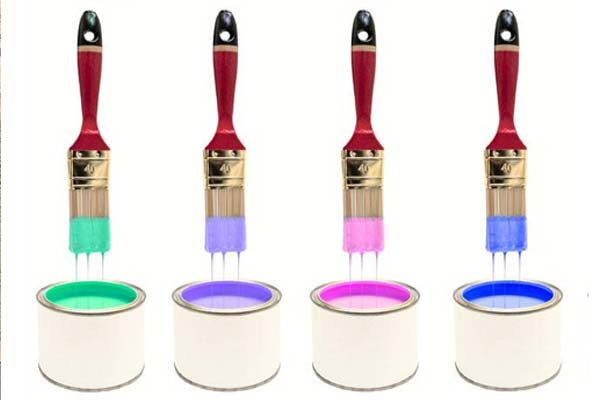Thickeners play a crucial role in water-based paints by controlling viscosity, improving stability, and enhancing application properties. This paper presents a comprehensive review of thickeners used in water-based paints, focusing on their types, mechanisms of action, formulation considerations, and recent advancements. Various classes of thickeners, including cellulosic, associative, synthetic, and natural polymers, are discussed in detail, highlighting their specific attributes and applications. Factors influencing the selection and performance of thickeners in paint formulations, such as shear stability, sag resistance, and compatibility with additives, are examined. Additionally, emerging trends in the development of eco-friendly and sustainable thickeners for water-based paints are explored, emphasizing the importance of environmental considerations in paint formulation.
Keywords: Thickeners, Water-Based Paints, Viscosity Control, Stability, Formulation, Eco-Friendly
- Introduction Water-based paints have gained widespread popularity due to their low volatile organic compound (VOC) content, ease of application, and environmental friendliness. Thickeners are essential additives in water-based paints, serving to increase viscosity, prevent settling, and improve the overall performance of the paint. The selection of an appropriate thickener is crucial to achieving desired rheological properties and ensuring the quality of the final paint product.
- Types of Thickeners for Water-Based Paints Thickeners for water-based paints can be classified into several categories based on their chemical composition and mode of action:
2.1. Cellulosic Thickeners: Cellulose derivatives such as hydroxyethyl cellulose (HEC), methyl cellulose (MC), and hydroxypropyl methyl cellulose (HPMC) are widely used as thickeners in water-based paints. These polymers form colloidal suspensions in water, imparting viscosity and shear-thinning behavior to paint formulations.
2.2. Associative Thickeners: Associative thickeners, including hydrophobically modified alkali-soluble emulsions (HASE) and hydrophobically modified hydroxyethyl cellulose (HMHEC), rely on hydrophobic interactions to thicken water-based paints. These thickeners offer improved sag resistance and leveling properties compared to traditional cellulosic thickeners.
2.3. Synthetic Thickeners: Synthetic polymers such as polyacrylic acids (PAA) and polyurethanes (PU) are also used as thickeners in water-based paints. These thickeners exhibit excellent water compatibility, shear stability, and resistance to microbial degradation, making them suitable for various paint applications.
2.4. Natural Thickeners: Natural polymers derived from plant sources, such as xanthan gum, guar gum, and starch, are utilized as thickeners in eco-friendly paint formulations. These thickeners offer biodegradability, renewability, and compatibility with organic and inorganic pigments.
- Mechanisms of Thickening The thickening mechanisms of various thickeners differ based on their chemical structure and interactions with water molecules and other components in the paint formulation. Cellulosic thickeners act primarily through hydrogen bonding and chain entanglement, resulting in viscosity enhancement and pseudoplastic flow behavior. Associative thickeners form networks of hydrophobic associations within the paint matrix, leading to increased viscosity and shear-thinning properties. Synthetic thickeners utilize a combination of hydrogen bonding, electrostatic interactions, and chain entanglement to achieve thickening effects, while natural thickeners rely on hydration and swelling mechanisms to increase viscosity.
- Formulation Considerations Several factors must be considered when formulating water-based paints with thickeners:
4.1. Compatibility: Thickeners should be compatible with other additives such as dispersants, defoamers, and preservatives to ensure stability and performance.
4.2. Shear Stability: Thickeners should maintain viscosity and rheological properties under shear forces encountered during mixing, application, and storage.
4.3. Sag Resistance: Thickeners should prevent sagging and dripping of paint films on vertical surfaces, particularly in high-viscosity formulations.
4.4. Environmental Impact: The choice of thickeners should take into account environmental considerations, such as biodegradability, toxicity, and renewable sourcing.
- Recent Advancements and Future Trends Recent advancements in the field of thickeners for water-based paints include the development of novel polymer architectures, functionalized additives, and sustainable alternatives. Biopolymer-based thickeners derived from renewable resources show promise as eco-friendly alternatives to synthetic thickeners. Furthermore, the integration of nanotechnology and microencapsulation techniques offers opportunities for enhancing the performance and stability of water-based paint formulations.
- Conclusion Thickeners are essential additives in water-based paints, contributing to viscosity control, stability, and application properties. A diverse range of thickeners, including cellulosic, associative, synthetic, and natural polymers, are employed in paint formulations to achieve desired rheological characteristics. Formulators must carefully consider factors such as compatibility, shear stability, sag resistance, and environmental impact when selecting thickeners for specific paint applications. Future research and innovation in the field of thickeners for water-based paints will continue to focus on sustainability, performance enhancement, and the development of eco-friendly alternatives.


